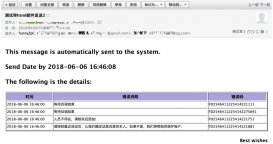本文基于jdk1.8进行分析。
arraylist和hashmap是我们经常使用的集合,它们不是线程安全的。我们一般都知道hashmap的线程安全版本为concurrenthashmap,那么arraylist有没有类似的线程安全的版本呢?还真有,它就是copyonwritearraylist。
copyonwrite这个短语,还有一个专门的称谓cow. cow不仅仅是java实现集合框架时专用的机制,它在计算机中被广泛使用。
首先看一下什么是copyonwritearraylist,它的类前面的javadoc注释很长,我们只截取最前面的一小段。如下。它的介绍中说到,copyonwritearraylist是arraylist的一个线程安全的变种,在copyonwritearraylist中,所有改变操作(add,set等)都是通过给array做一个新的拷贝来实现的。通常来看,这花费的代价太大了,但是,当读取list的线程数量远远多于写list的线程数量时,这种方法依然比别的实现方式更高效。
|
1
2
3
4
5
6
7
8
9
10
11
12
13
14
15
16
17
18
19
|
/** * a thread-safe variant of {@link java.util.arraylist} in which all mutative * operations ({@code add}, {@code set}, and so on) are implemented by * making a fresh copy of the underlying array. * <p>this is ordinarily too costly, but may be <em>more</em> efficient * than alternatives when traversal operations vastly outnumber * mutations, and is useful when you cannot or don't want to * synchronize traversals, yet need to preclude interference among * concurrent threads. the "snapshot" style iterator method uses a * reference to the state of the array at the point that the iterator * was created. this array never changes during the lifetime of the * iterator, so interference is impossible and the iterator is * guaranteed not to throw {@code concurrentmodificationexception}. * the iterator will not reflect additions, removals, or changes to * the list since the iterator was created. element-changing * operations on iterators themselves ({@code remove}, {@code set}, and * {@code add}) are not supported. these methods throw * {@code unsupportedoperationexception}. **/ |
下面看一下成员变量。只有2个,一个是基本数据结构array,用于保存数据,一个是可重入锁,它用于写操作的同步。
|
1
2
3
4
|
/** the lock protecting all mutators **/final transient reentrantlock lock = new reentrantlock();/** the array, accessed only via getarray/setarray. **/private transient volatile object[] array; |
下面看一下主要方法。get方法如下。get方法没有什么特殊之处,不加锁,直接读取即可。
|
1
2
3
4
5
6
7
8
9
10
11
12
13
14
15
16
17
18
|
/** * {@inheritdoc} * @throws indexoutofboundsexception {@inheritdoc} **/public e get(int index) { return get(getarray(), index);}/** * gets the array. non-private so as to also be accessible * from copyonwritearrayset class. **/final object[] getarray() { return array;}@suppresswarnings("unchecked")private e get(object[] a, int index) { return (e) a[index];} |
下面看一下add。add方法先加锁,然后,把原array拷贝到一个新的数组中,并把待添加的元素加入到新数组,最后,再把新数组赋值给原数组。这里可以看到,add操作并不是直接在原数组上操作,而是把整个数据进行了拷贝,才操作的,最后把新数组赋值回去。
|
1
2
3
4
5
6
7
8
9
10
11
12
13
14
15
16
17
18
19
20
21
22
23
24
25
|
/** * appends the specified element to the end of this list. * @param e element to be appended to this list * @return {@code true} (as specified by {@link collection#add}) **/public boolean add(e e) { final reentrantlock lock = this.lock; lock.lock(); try { object[] elements = getarray(); int len = elements.length; object[] newelements = arrays.copyof(elements, len + 1); newelements[len] = e; setarray(newelements); return true; } finally { lock.unlock(); }}/** * sets the array. **/final void setarray(object[] a) { array = a;} |
这里,思考一个问题。线程1正在遍历list,此时,线程2对线程进行了写入,那么,线程1可以遍历到线程2写入的数据吗?
首先明确一点,这个场景不会抛出任何异常,程序会安静的执行完成。是否能到读到线程2写入的数据,取决于遍历方式和线程2的写入时机及位置。
首先看遍历方式,我们2中方式遍历list,foreach和get(i)的方式。foreach的底层实现是迭代器,所以迭代器就不单独作为一种遍历方式了。首先看一下通过for循环get(i)的方式。这种遍历方式下,能否读取到线程2写入的数据,取决了线程2的写入时机和位置。如果线程1已经遍历到第5个元素了,那么如果线程2在第5个后面进行写入,那么线程1就可以读取到线程2的写入。
|
1
2
3
4
5
6
7
8
9
10
11
12
13
14
15
16
17
18
19
20
21
22
23
24
25
26
27
28
29
30
31
32
|
public class myclass { static list<string> list = new copyonwritearraylist<>(); public static void main(string[] args){ list.add("a"); list.add("b"); list.add("c"); list.add("d"); list.add("e"); list.add("f"); list.add("g"); list.add("h"); //启动线程1,遍历数据 new thread(()->{ try{ for(int i = 0; i < list.size();i ++){ system.out.println(list.get(i)); thread.sleep(1000); } }catch (exception e){ e.printstacktrace(); } }).start(); try{ //主线程作为线程2,等待2s thread.sleep(2000); }catch (exception e){ e.printstacktrace(); } //主线程作为线程2,在位置4写入数据,即,在遍历位置之后写入数据 list.add(4,"n"); }} |
上述程序的运行结果如下,是可以遍历到n的。
a
b
c
d
n
e
f
g
h
如果线程2在第5个位置前面写入,那么线程1就读取不到线程2的写入。同时,还会带来一个副作用,就是某个元素会被读取2次。代码如下:
|
1
2
3
4
5
6
7
8
9
10
11
12
13
14
15
16
17
18
19
20
21
22
23
24
25
26
27
28
29
30
31
32
|
public class myclass { static list<string> list = new copyonwritearraylist<>(); public static void main(string[] args){ list.add("a"); list.add("b"); list.add("c"); list.add("d"); list.add("e"); list.add("f"); list.add("g"); list.add("h"); //启动线程1,遍历数据 new thread(()->{ try{ for(int i = 0; i < list.size();i ++){ system.out.println(list.get(i)); thread.sleep(1000); } }catch (exception e){ e.printstacktrace(); } }).start(); try{ //主线程作为线程2,等待2s thread.sleep(2000); }catch (exception e){ e.printstacktrace(); } //主线程作为线程2,在位置1写入数据,即,在遍历位置之后写入数据 list.add(1,"n"); }} |
上述代码的运行结果如下,其中,b被遍历了2次。
a
b
b
c
d
e
f
g
h
那么,采用foreach方式遍历呢?答案是无论线程2写入时机如何,线程2都无法读取到线程2的写入。原因在于copyonwritearraylist在创建迭代器时,取了当前时刻数组的快照。并且,add操作只会影响原数组,影响不到迭代器中的快照。
|
1
2
3
4
5
6
7
|
public iterator<e> iterator() { return new cowiterator<e>(getarray(), 0);}private cowiterator(object[] elements, int initialcursor) { cursor = initialcursor; snapshot = elements;} |
了解清楚了遍历方式和写入时机对是否能够读取到写入的影响,我们在使用copyonwritearraylist时就可以根据实际业务场景的需求,选择合适的实现方式了。
总结
以上就是这篇文章的全部内容了,希望本文的内容对大家的学习或者工作具有一定的参考学习价值,谢谢大家对服务器之家的支持。如果你想了解更多相关内容请查看下面相关链接
原文链接:https://blog.csdn.net/li_canhui/article/details/85003987














